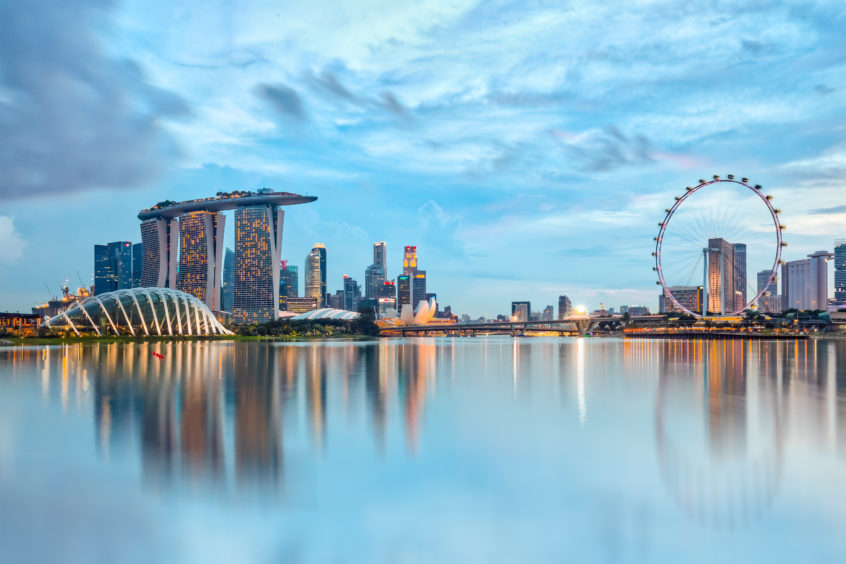
Singapore, home to the world’s largest bunkering port, is aiming to pioneer the world’s first ship-to-ship ammonia bunkering base to help decarbonise global shipping.
Maersk, Fleet Management, Keppel Offshore & Marine, Sumitomo and Yara International have come together to carry out a joint feasibility study to build a competitive supply chain for green ammonia ship-to-ship bunkering in Singapore.
Emitting zero carbon dioxide (CO2) when combusted, ammonia has long been considered as one of the most promising alternative marine fuels to reduce greenhouse gas (GHG) emissions within the shipping industry. In particular, green ammonia possesses great potential as it is produced from only renewable electricity, water and air with no CO2 emission, Singapore’s Keppel O&M said today.
The study aims to cover the entire end-to-end supply chain of ammonia bunkering, which includes the development of a cost-effective green ammonia supply chain, design of ammonia bunkering vessels, as well as related supply chain infrastructure. The study will also assess the supply of ammonia including potential synergies with liquefied petroleum gas (LPG) as a starting point.
“Alongside Methanol, at A. P. Moller-Maersk we see green ammonia as an important future fuel for the decarbonisation of our fleet. A dual fuel ammonia engine is currently under development, but for green ammonia to fuel our vessels in the future we also have supply, infrastructure and safety related challenges to solve, not least when it comes to bunkering operations. We are pleased to work with renowned companies in this field to pave the way for ammonia as a future fuel to decarbonise global shipping,” said Morten Bo Christiansen, VP and Head of Decarbonisation at A.P. Moller-Maersk.
“There are multiple routes to the decarbonisation of the marine industry, and we are pleased to be able to leverage our expertise in engineering and bunkering to spearhead the development of cleaner marine fuels such as ammonia. This includes the design of ammonia bunkering and ammonia-powered vessels, as well as developing the value chain necessary for the adoption of ammonia. This is in line with Keppel’s Vision 2030, which includes seizing opportunities in new energy,” said Chris Ong, CEO of Keppel Offshore & Marine.
“With this MoU, we embark on our ambition to build the world’s first ship-to-ship ammonia bunkering base, which highlight our commitment to offer our customers the best available and technologically proven solution to reduce the emission footprint from maritime transport,” said Hajime Mori, executive officer of Sumitomo Corporation.
Recommended for you

